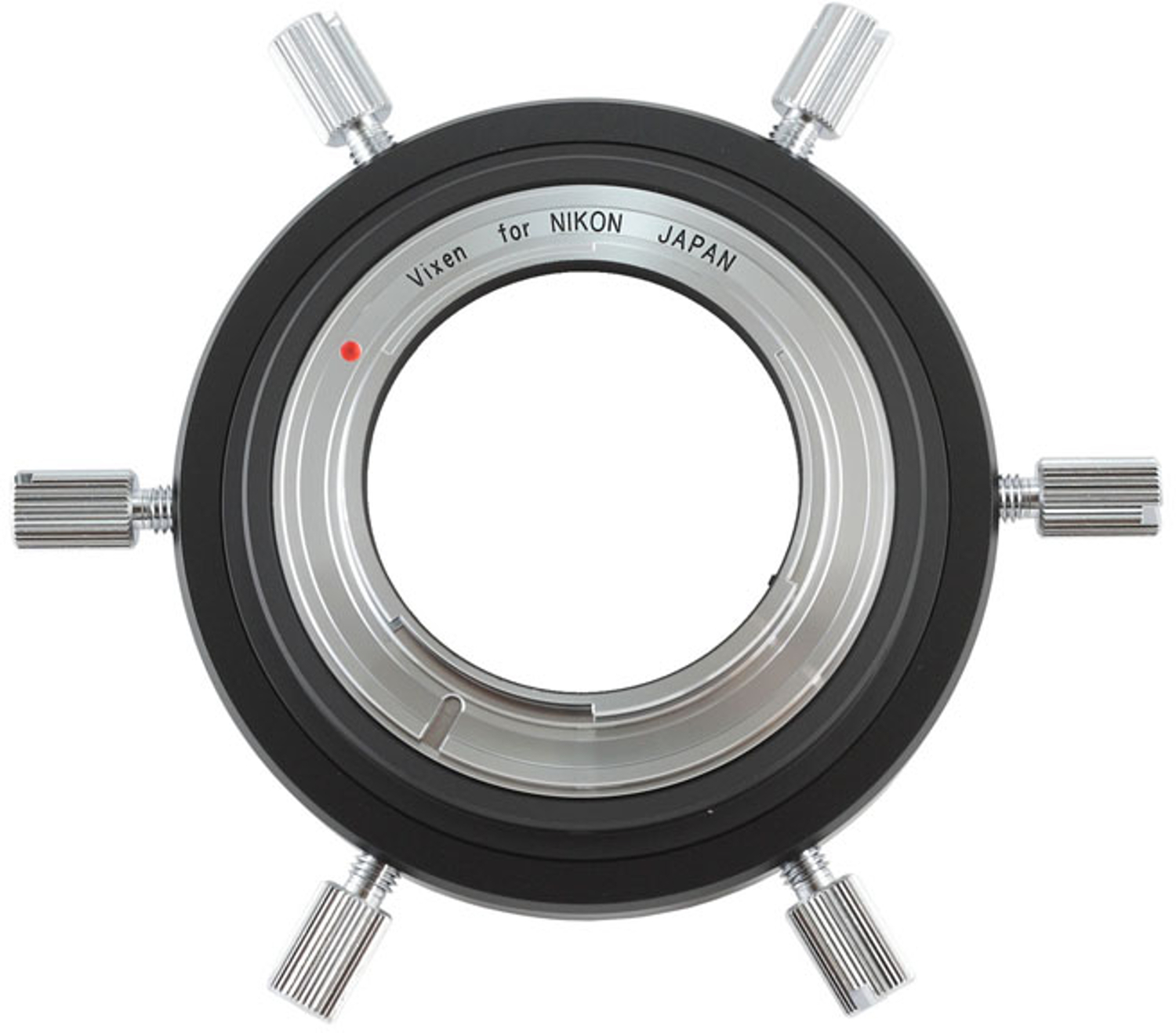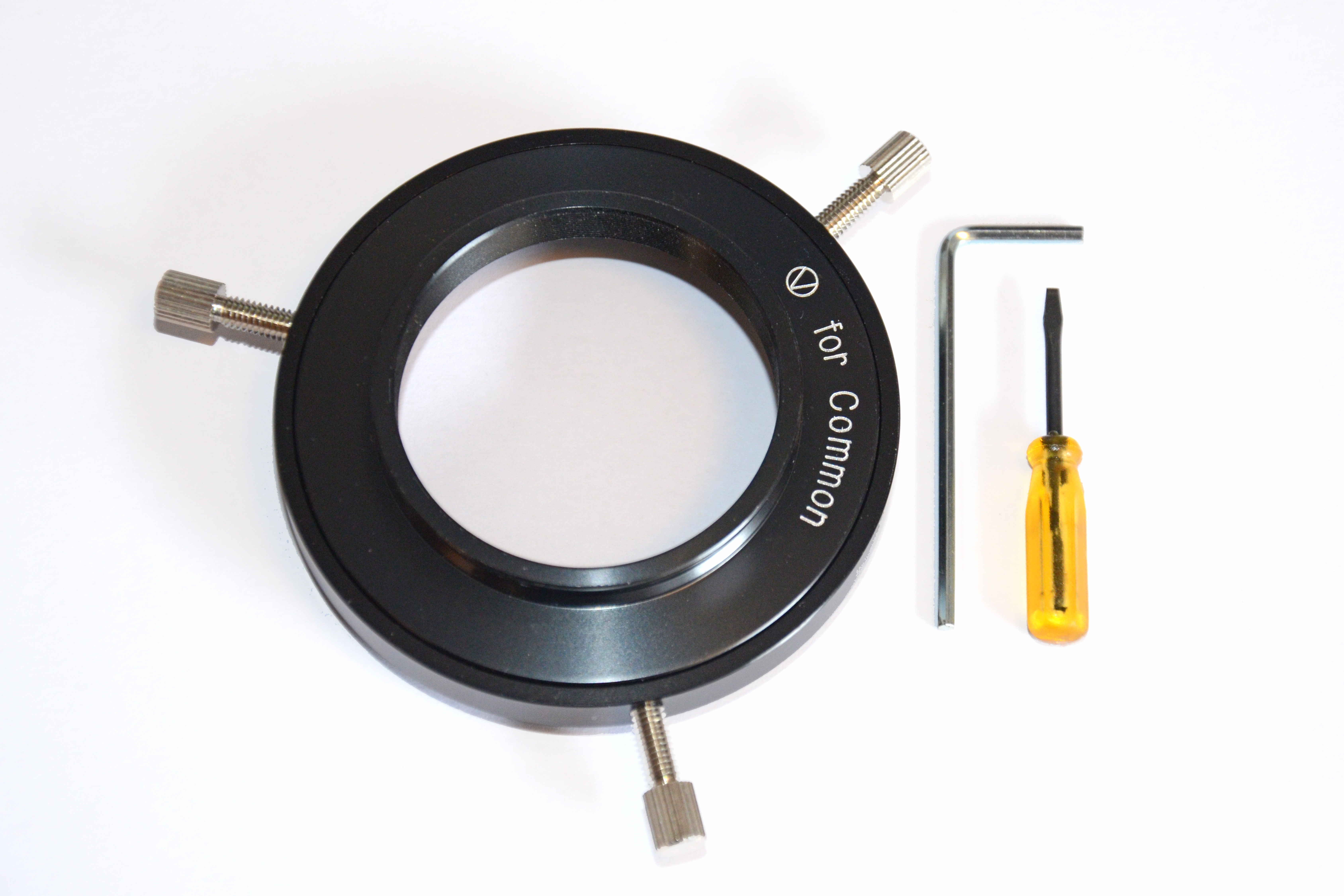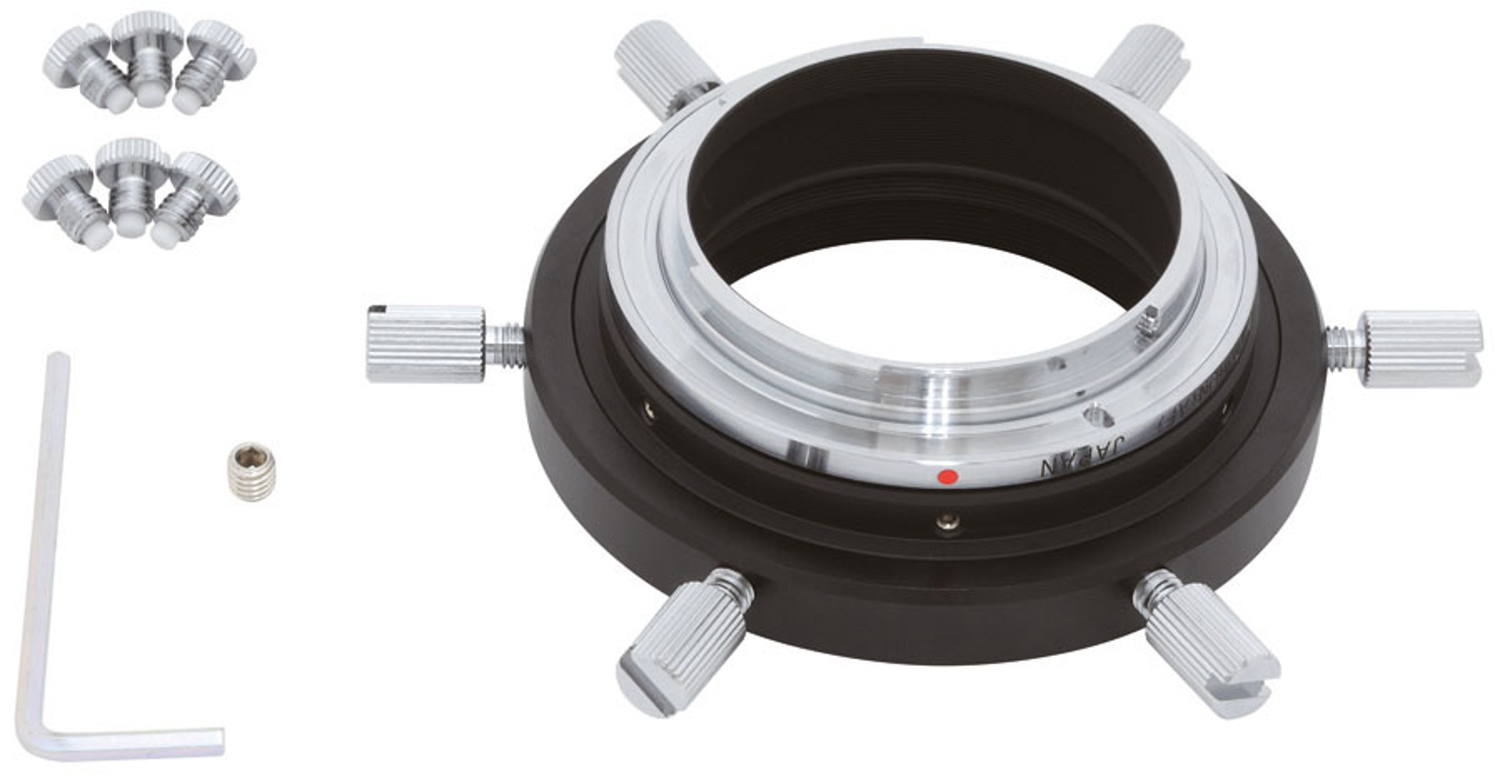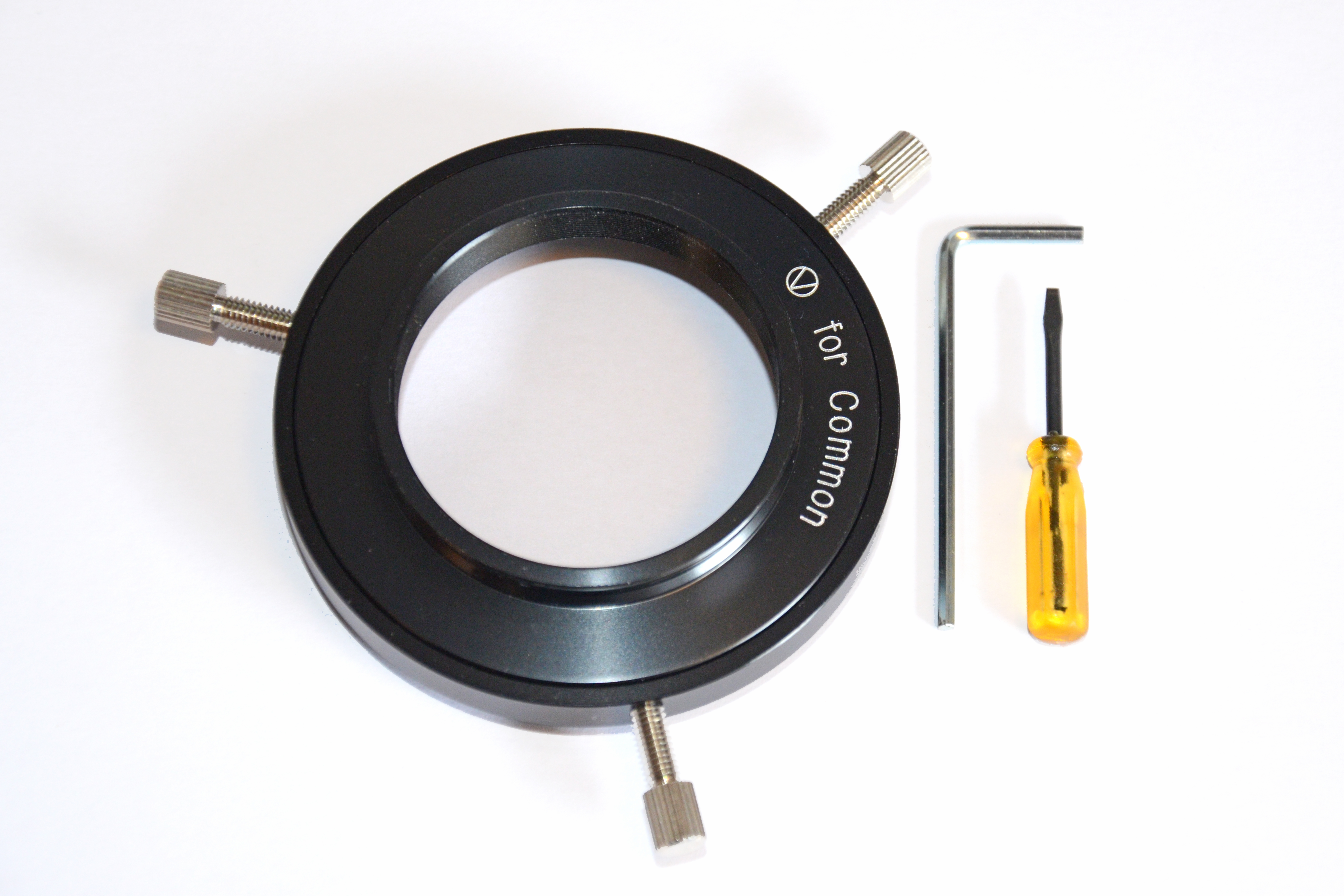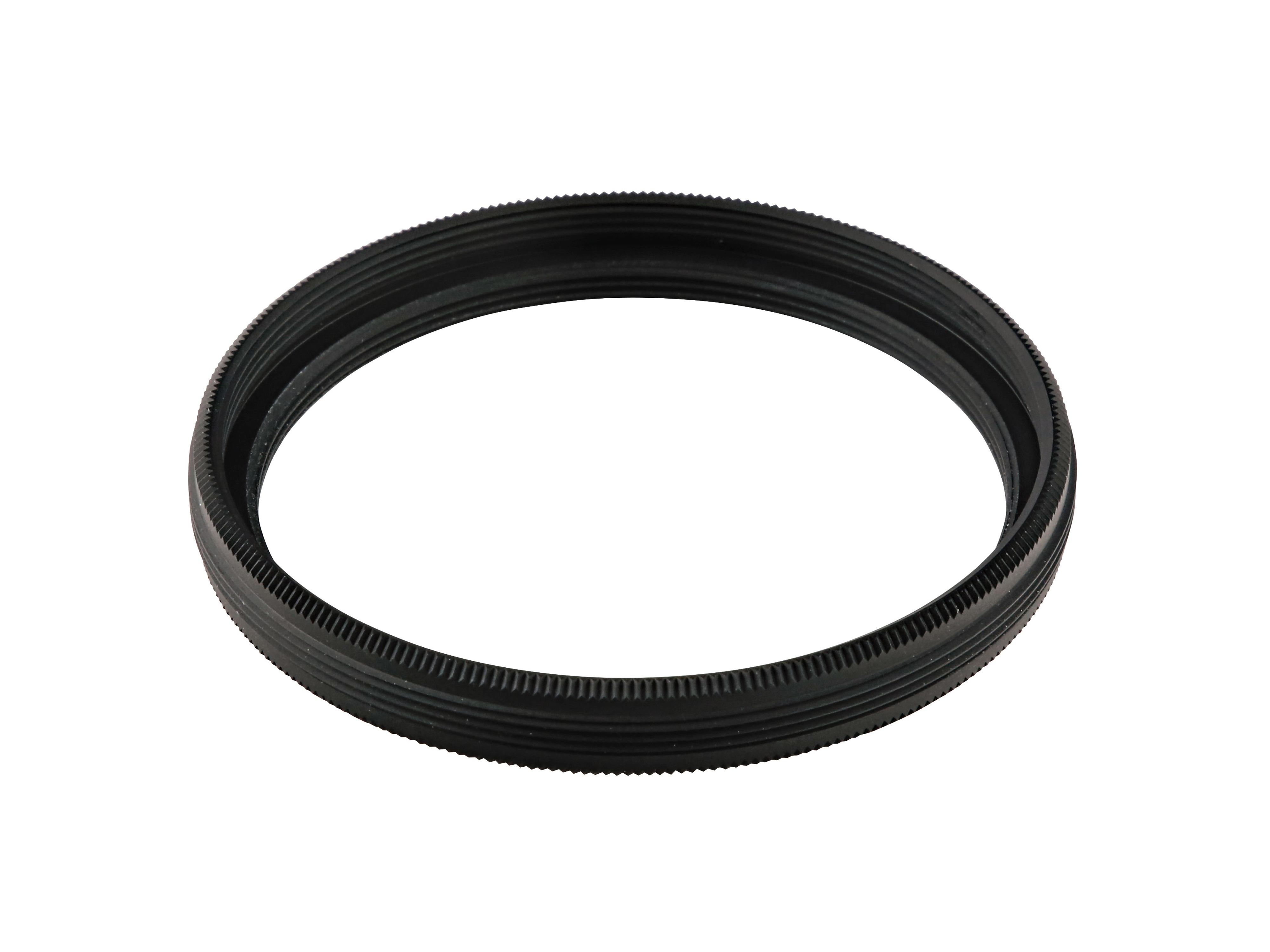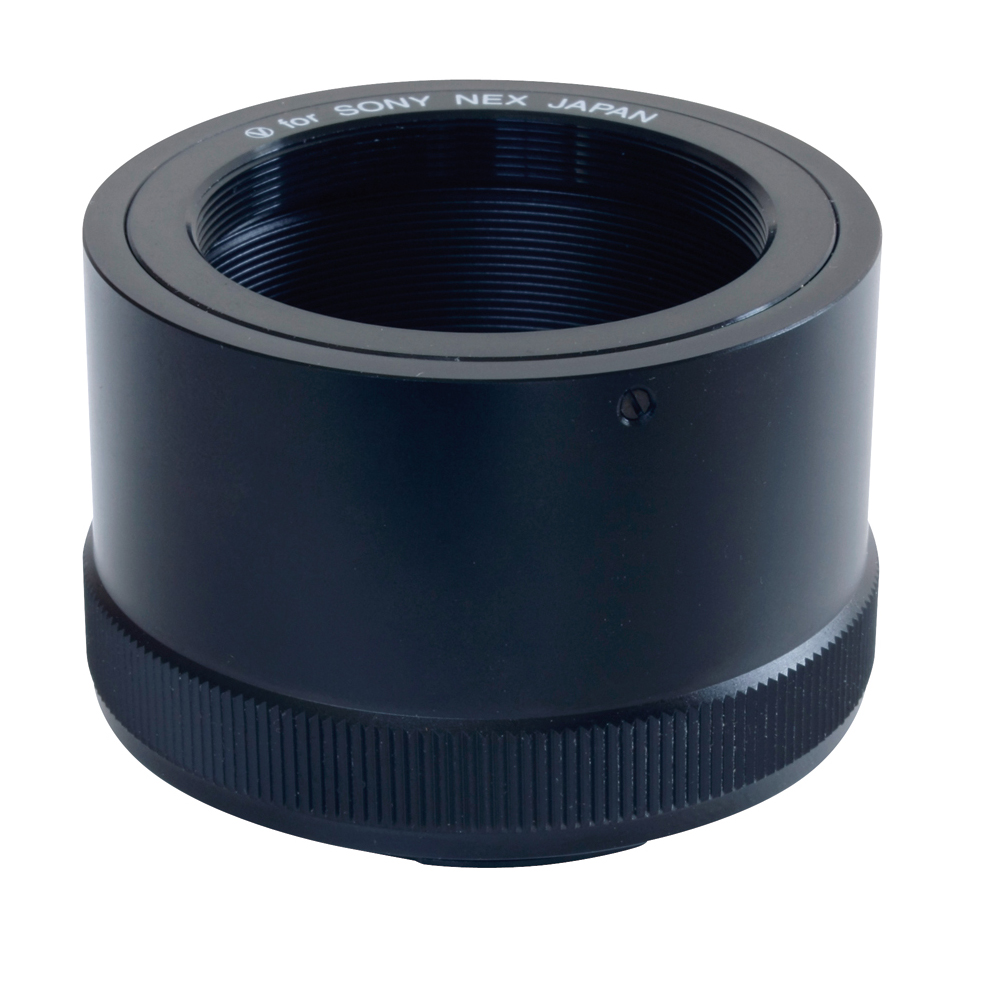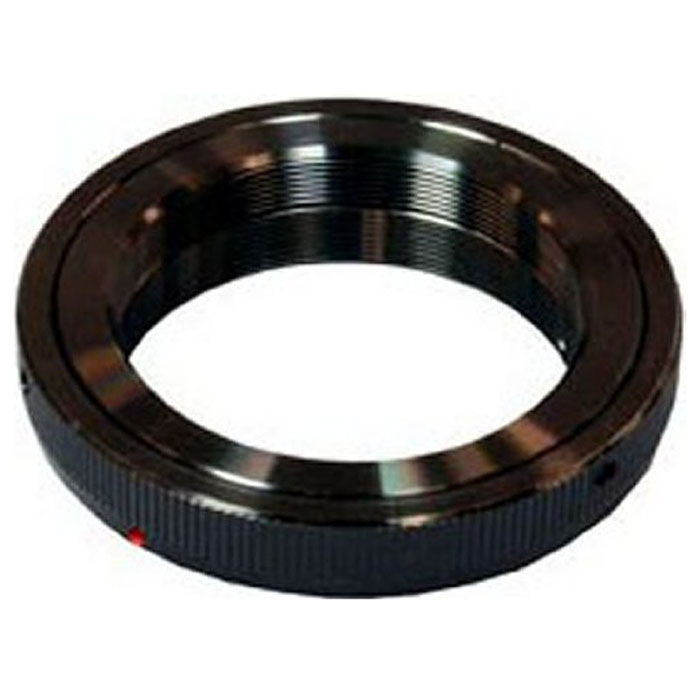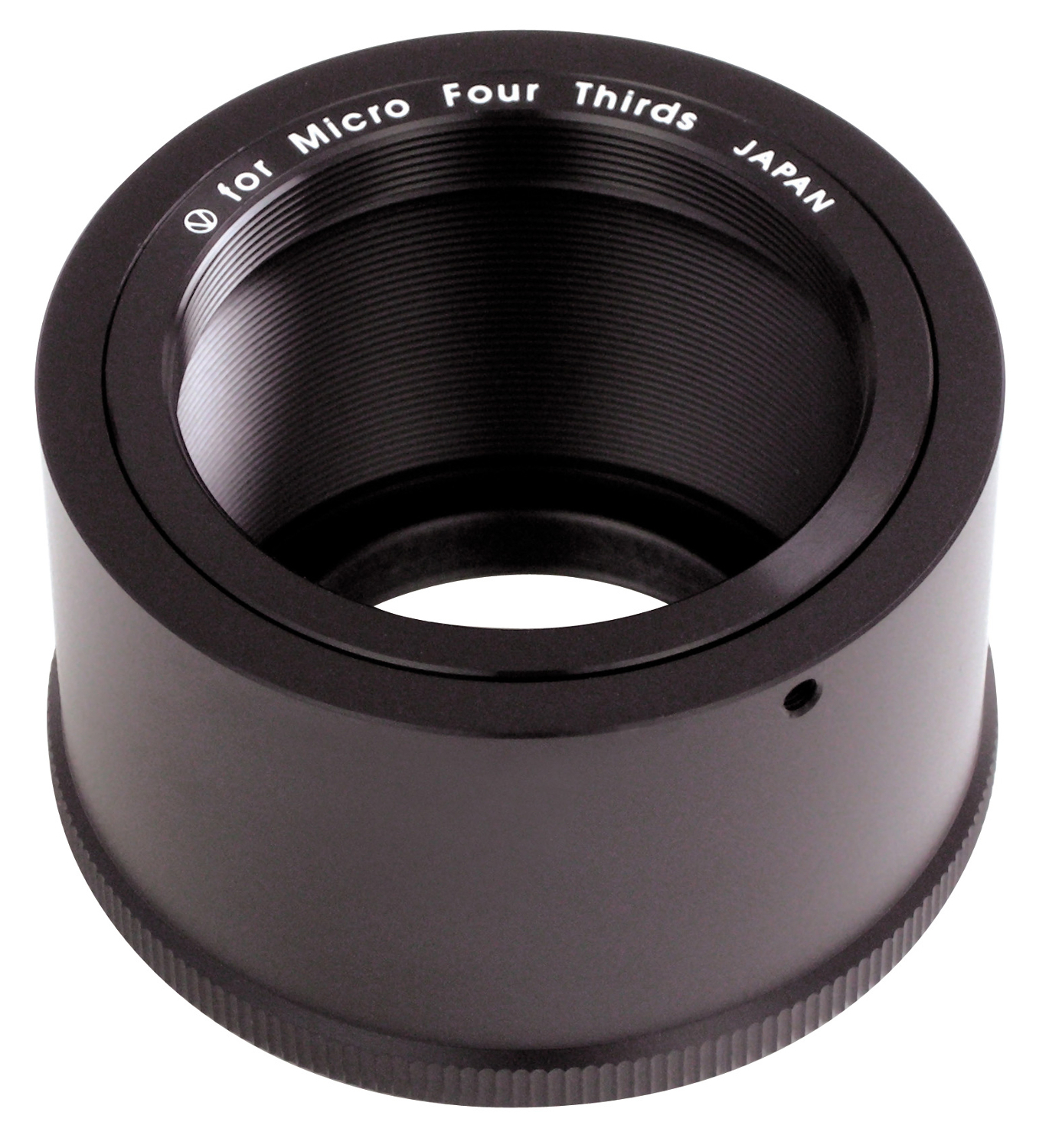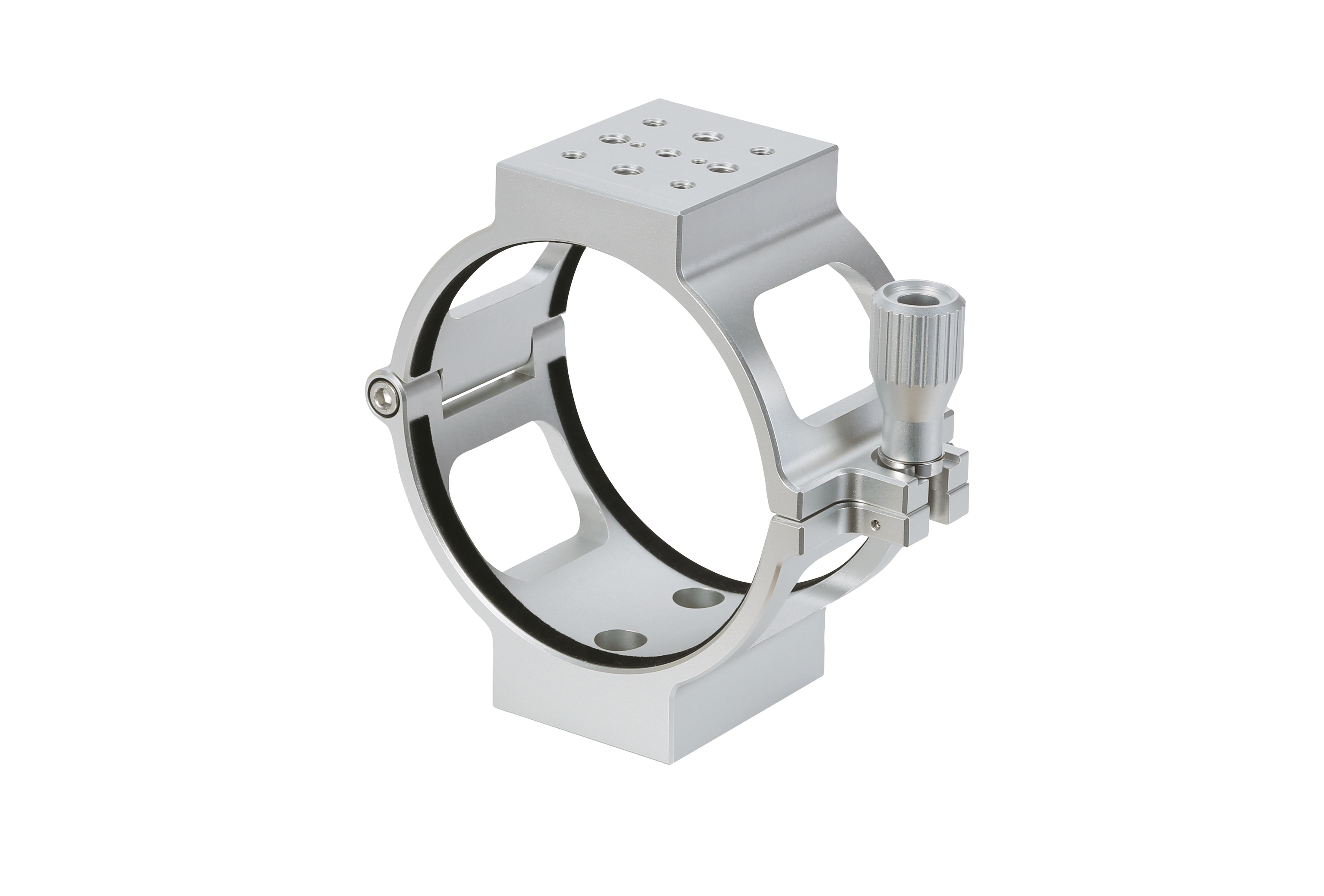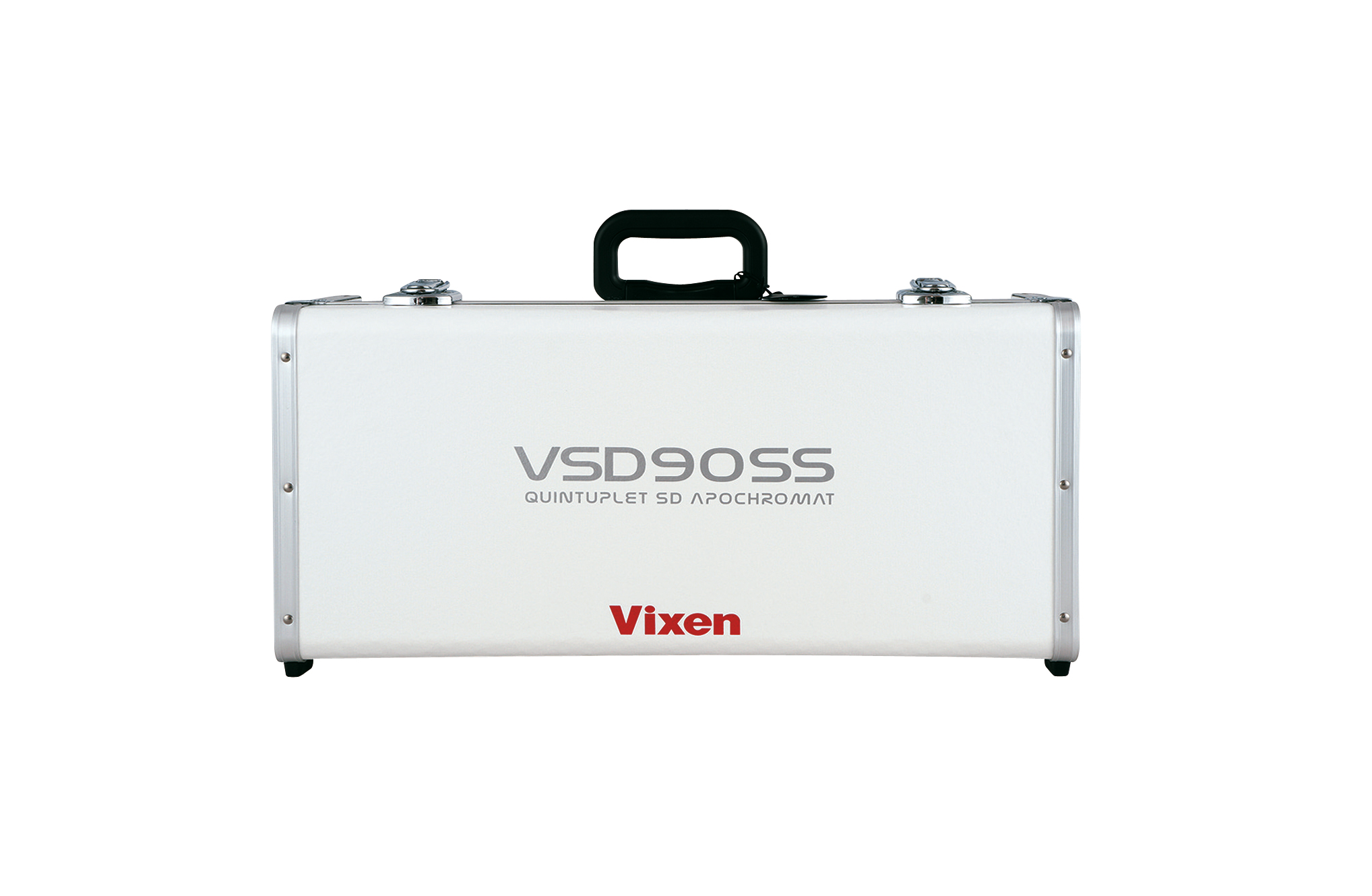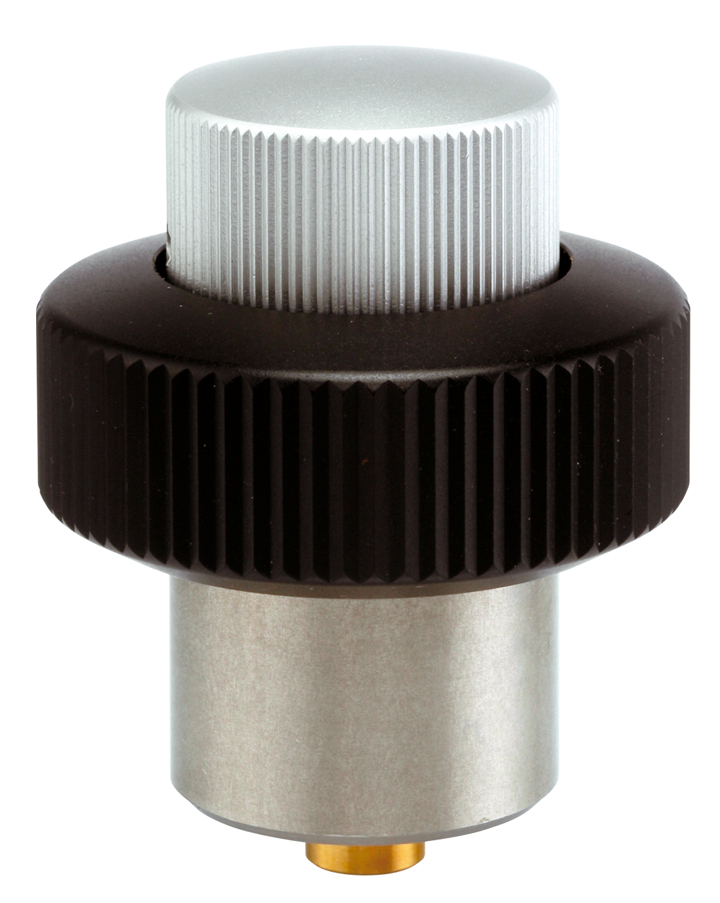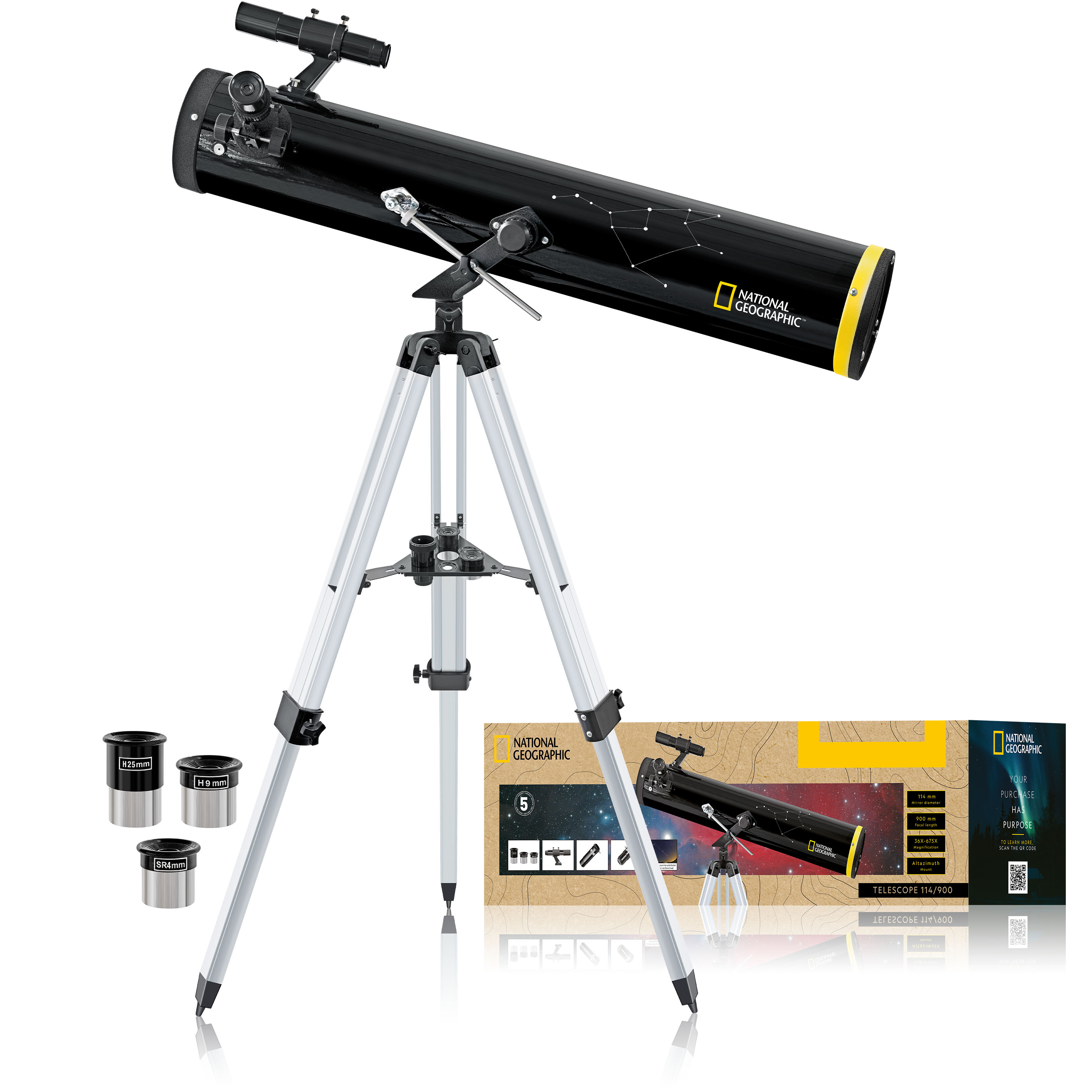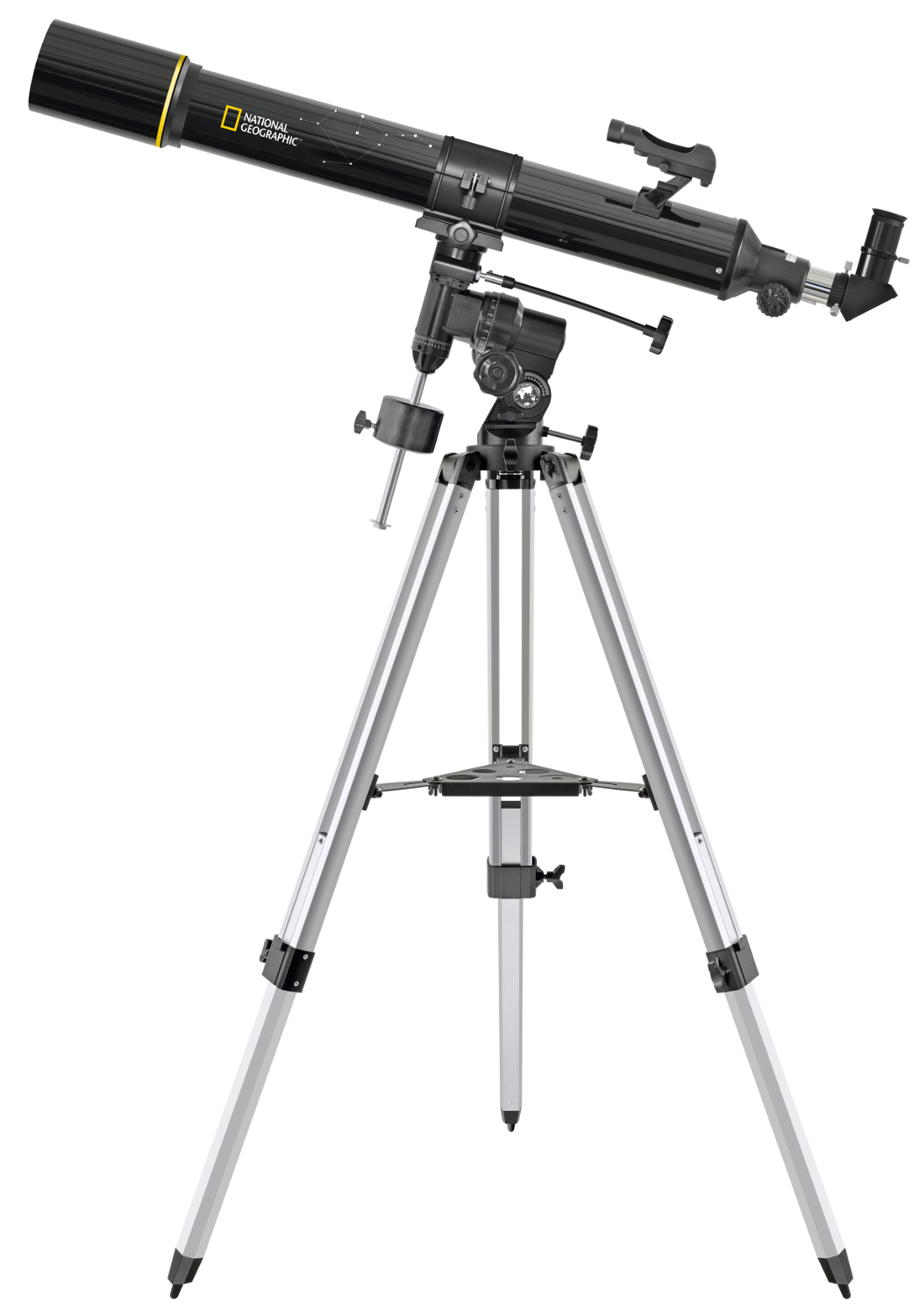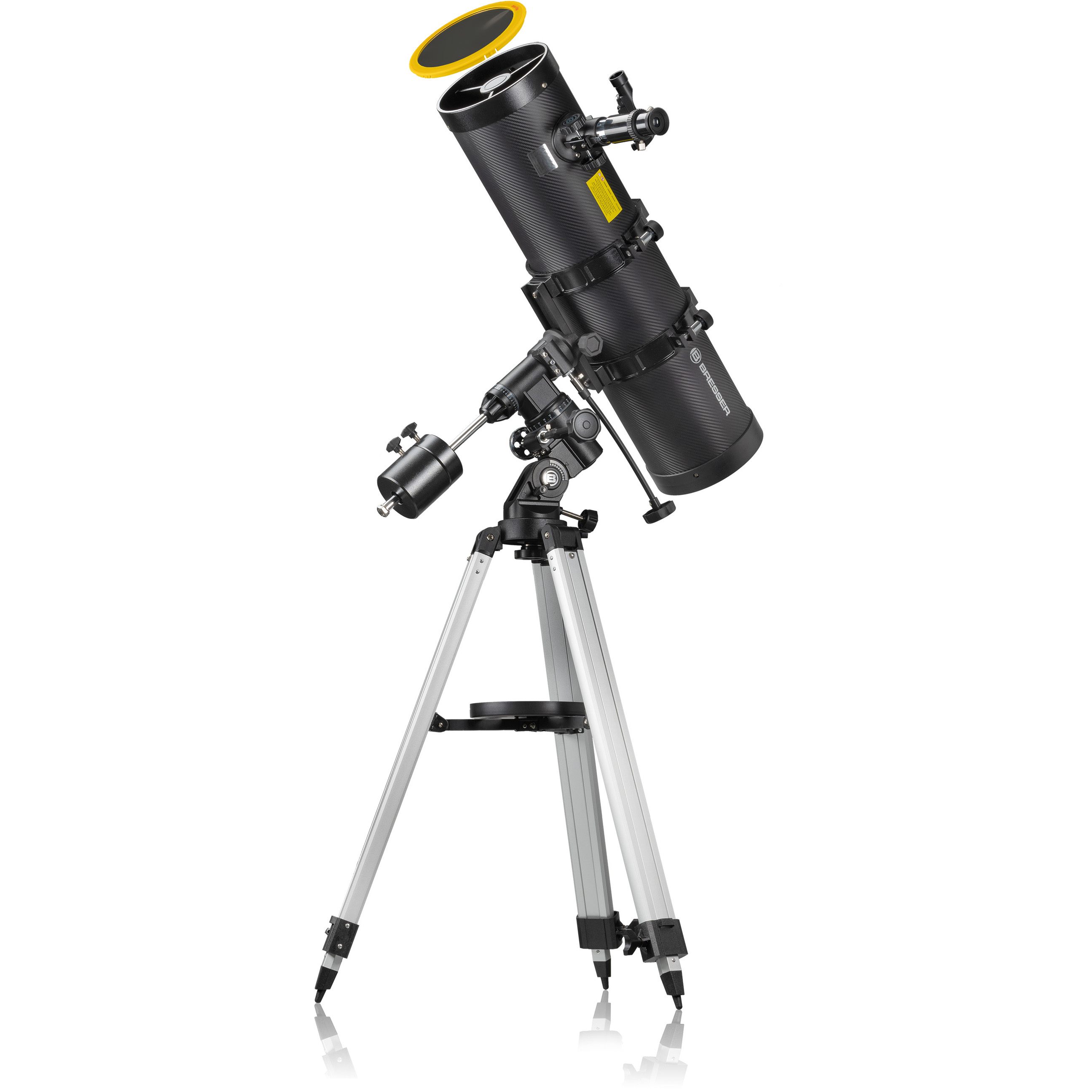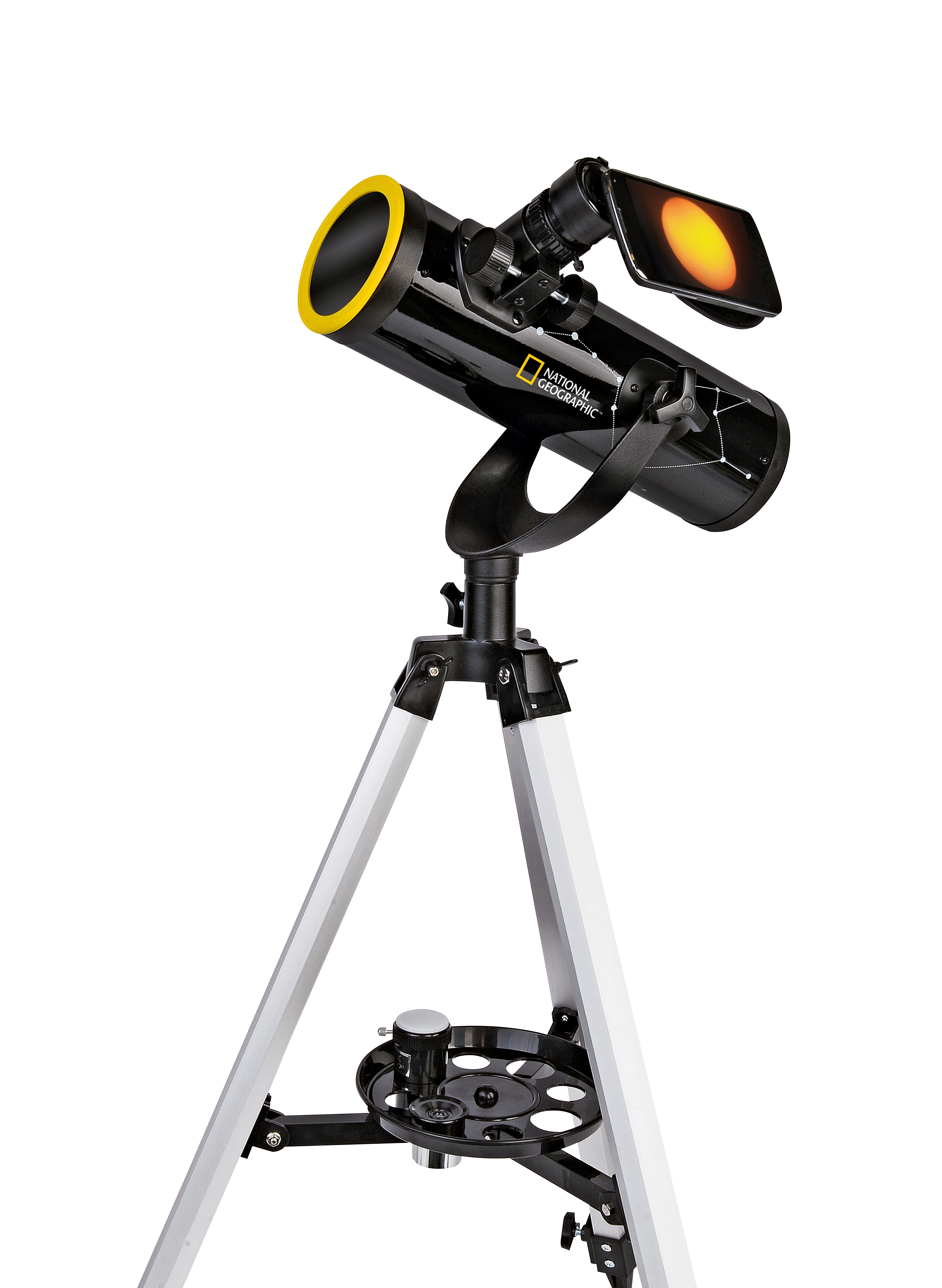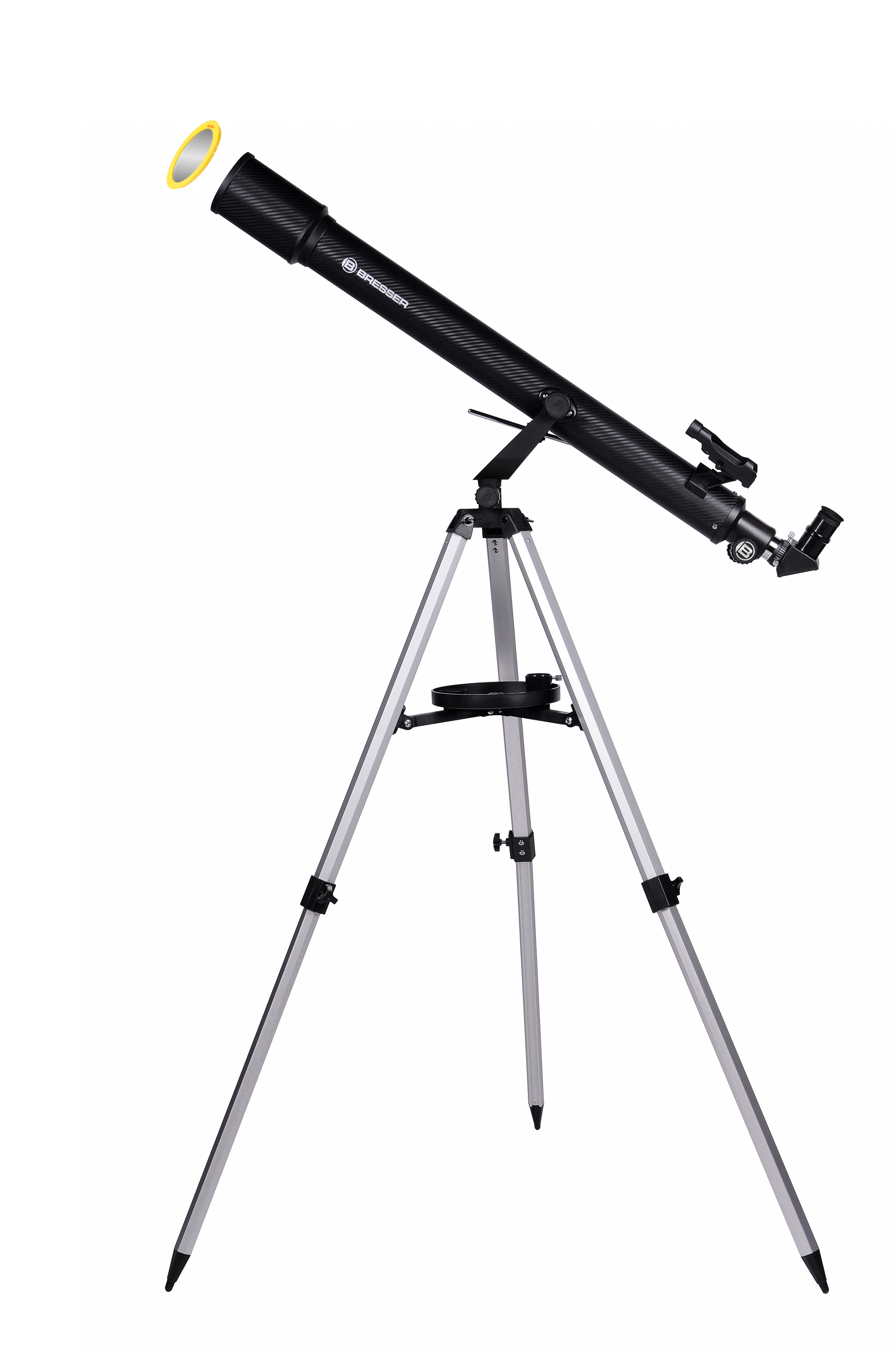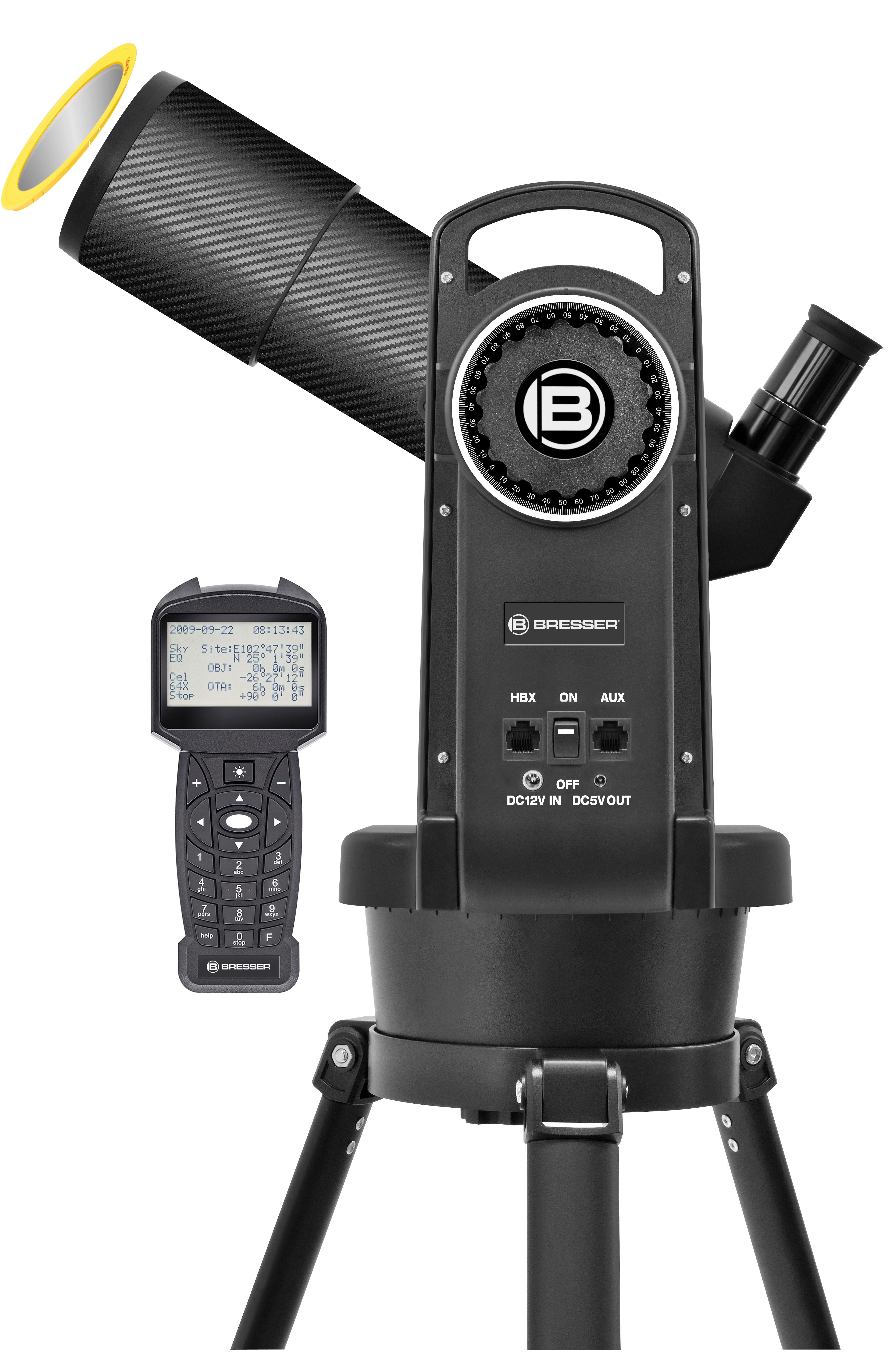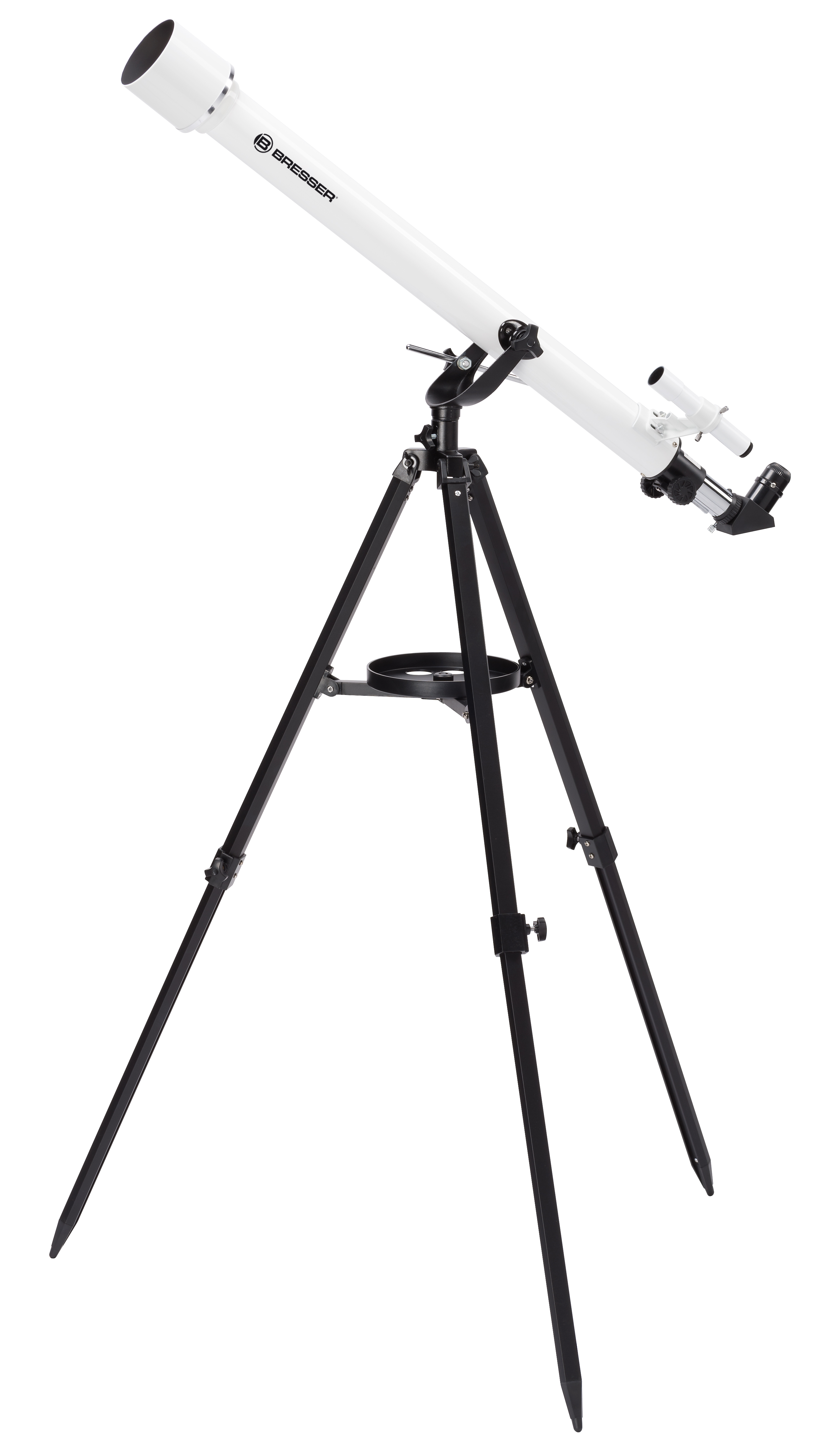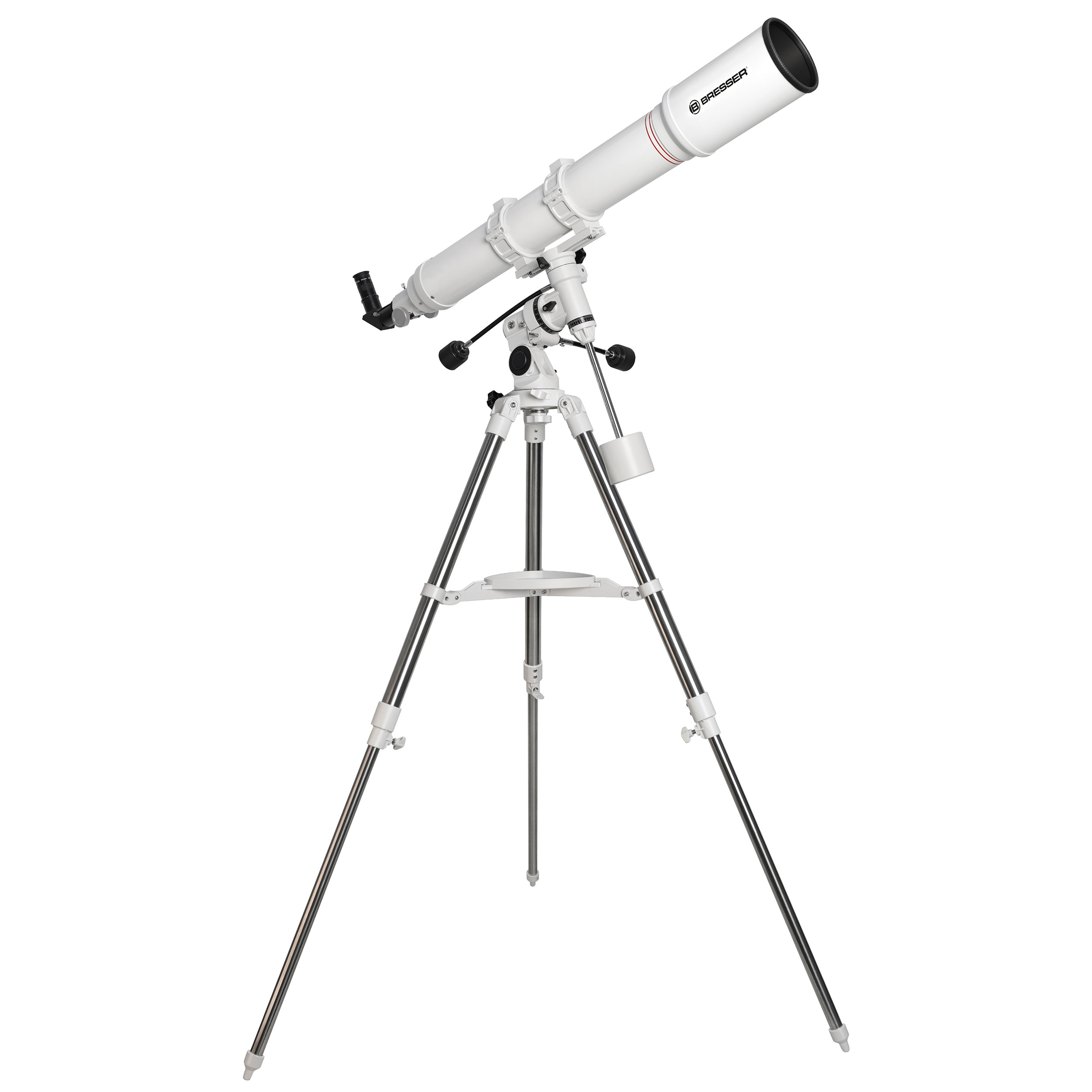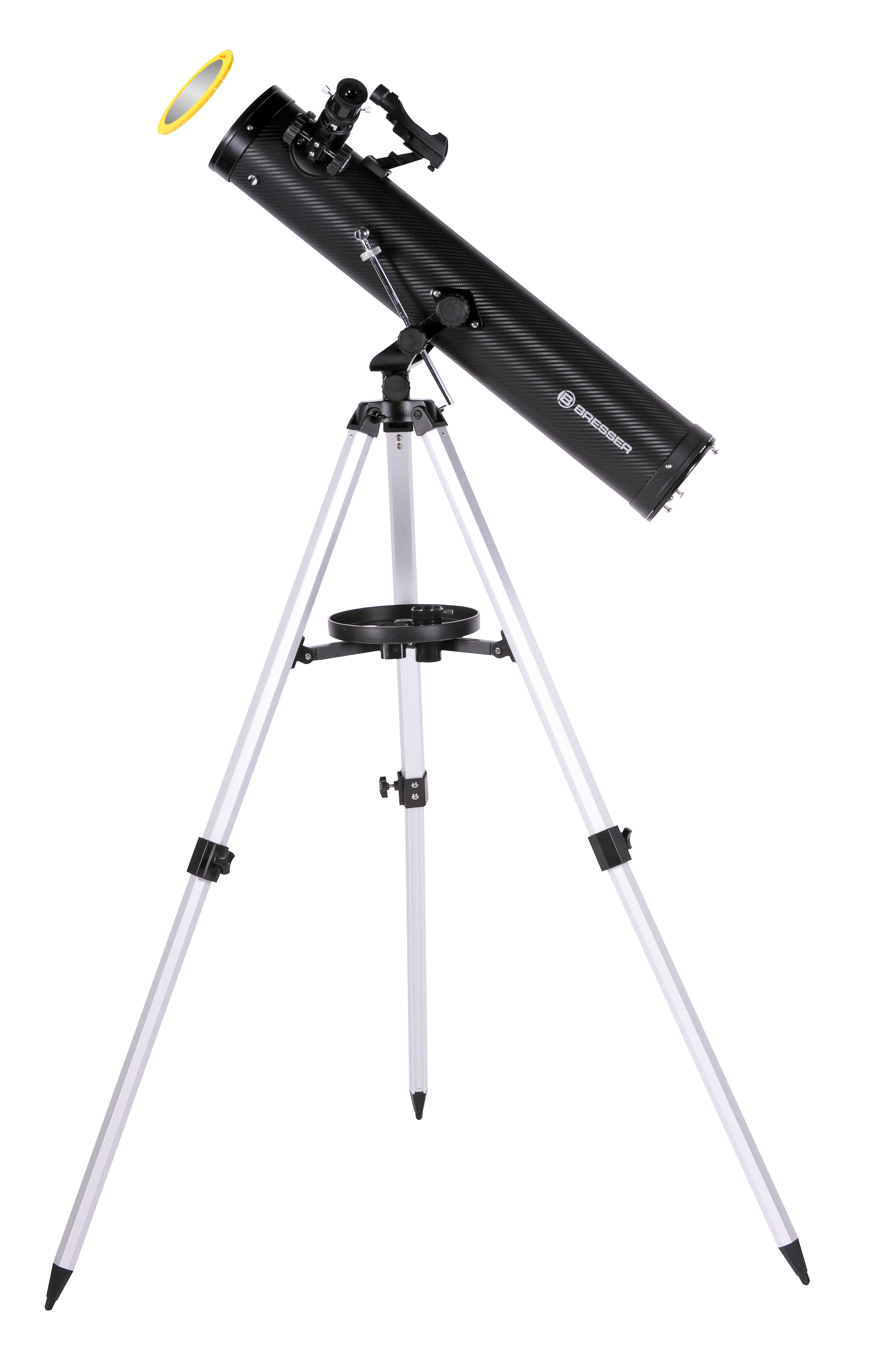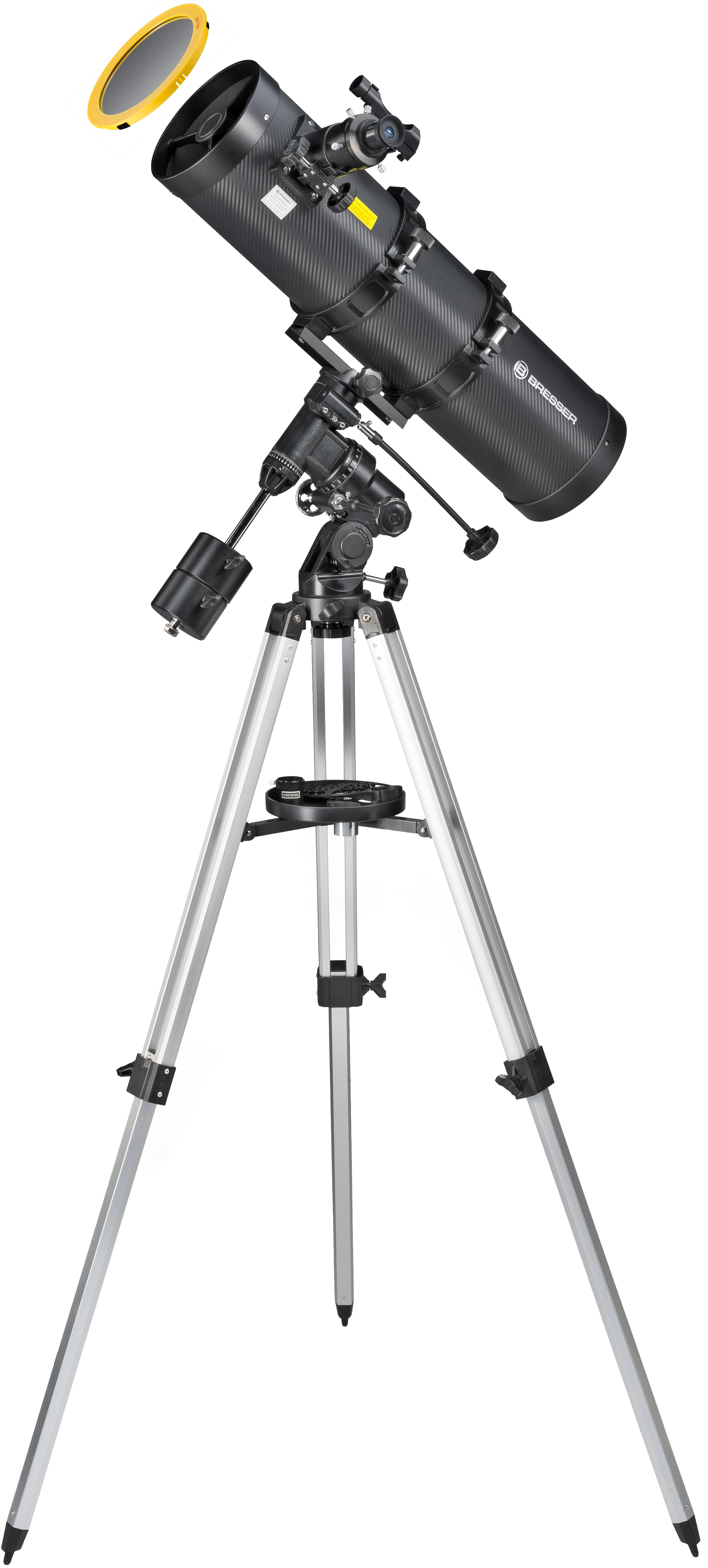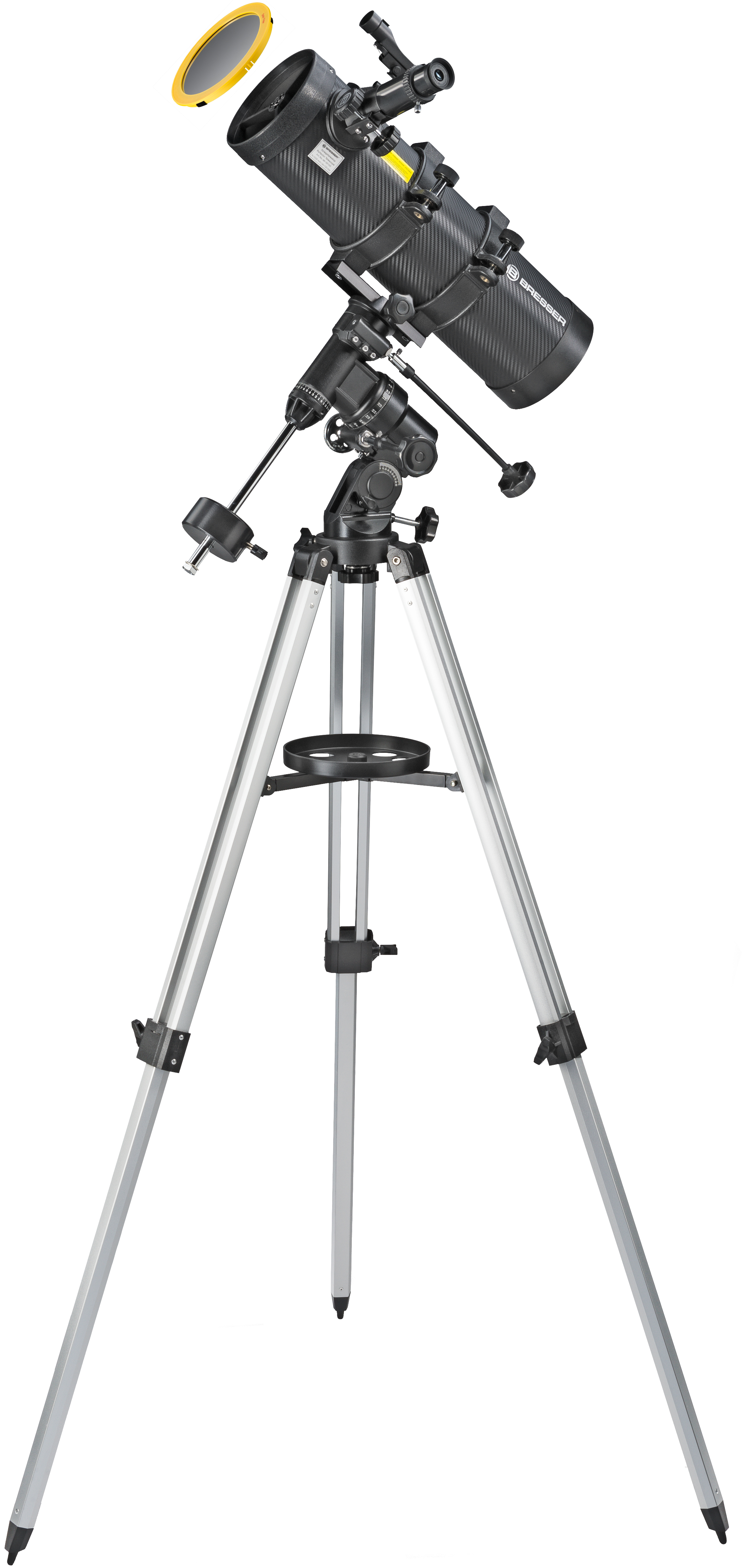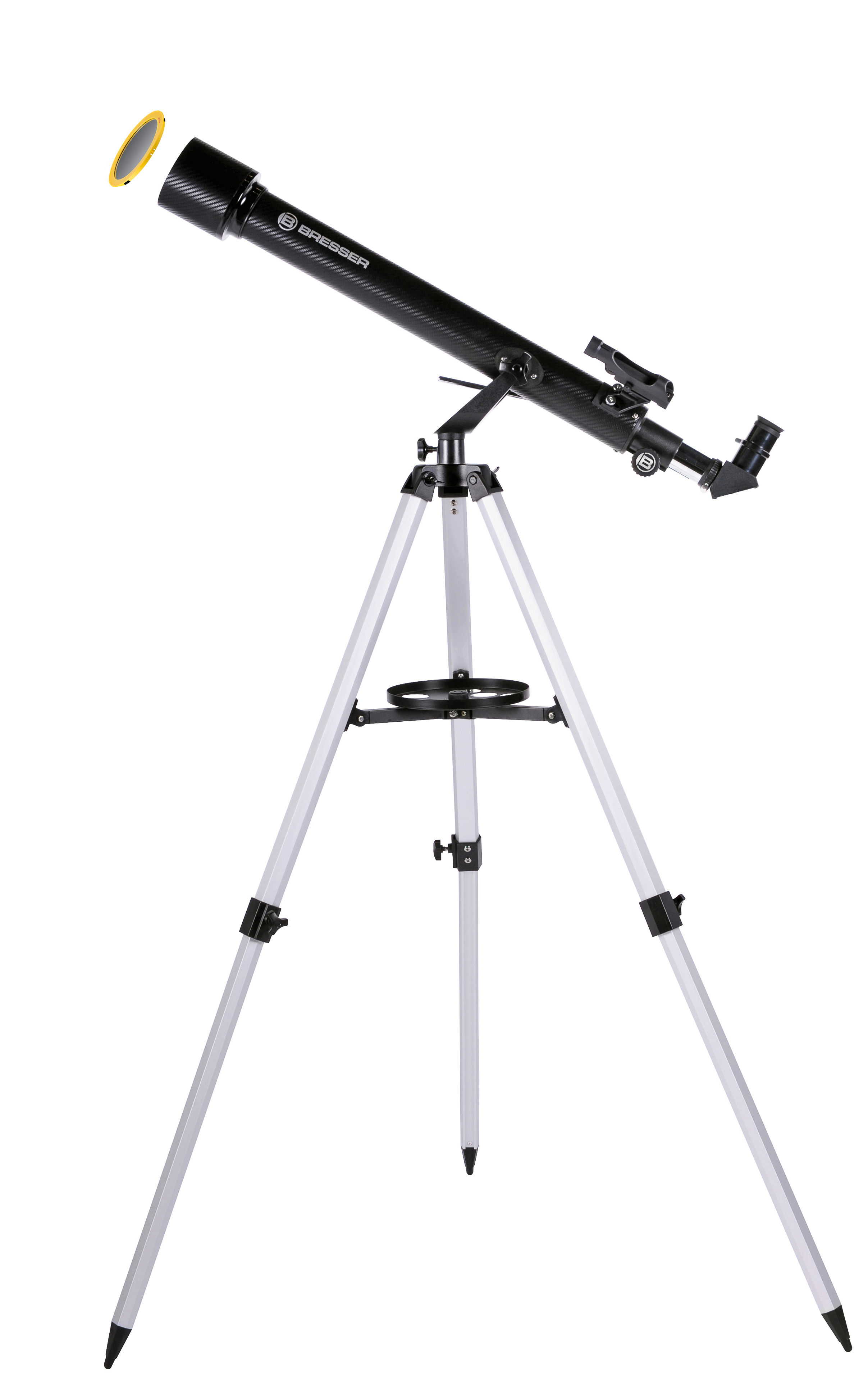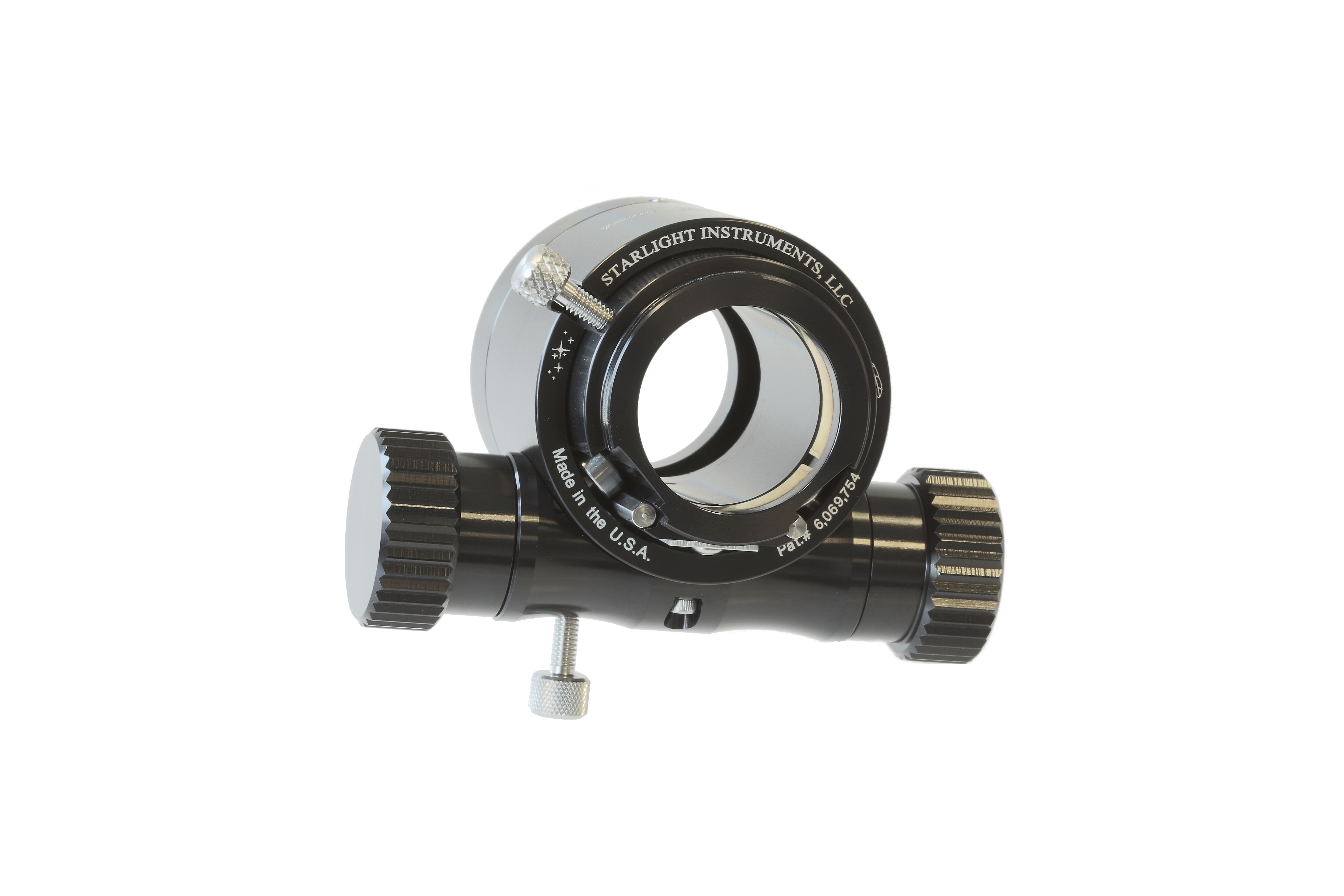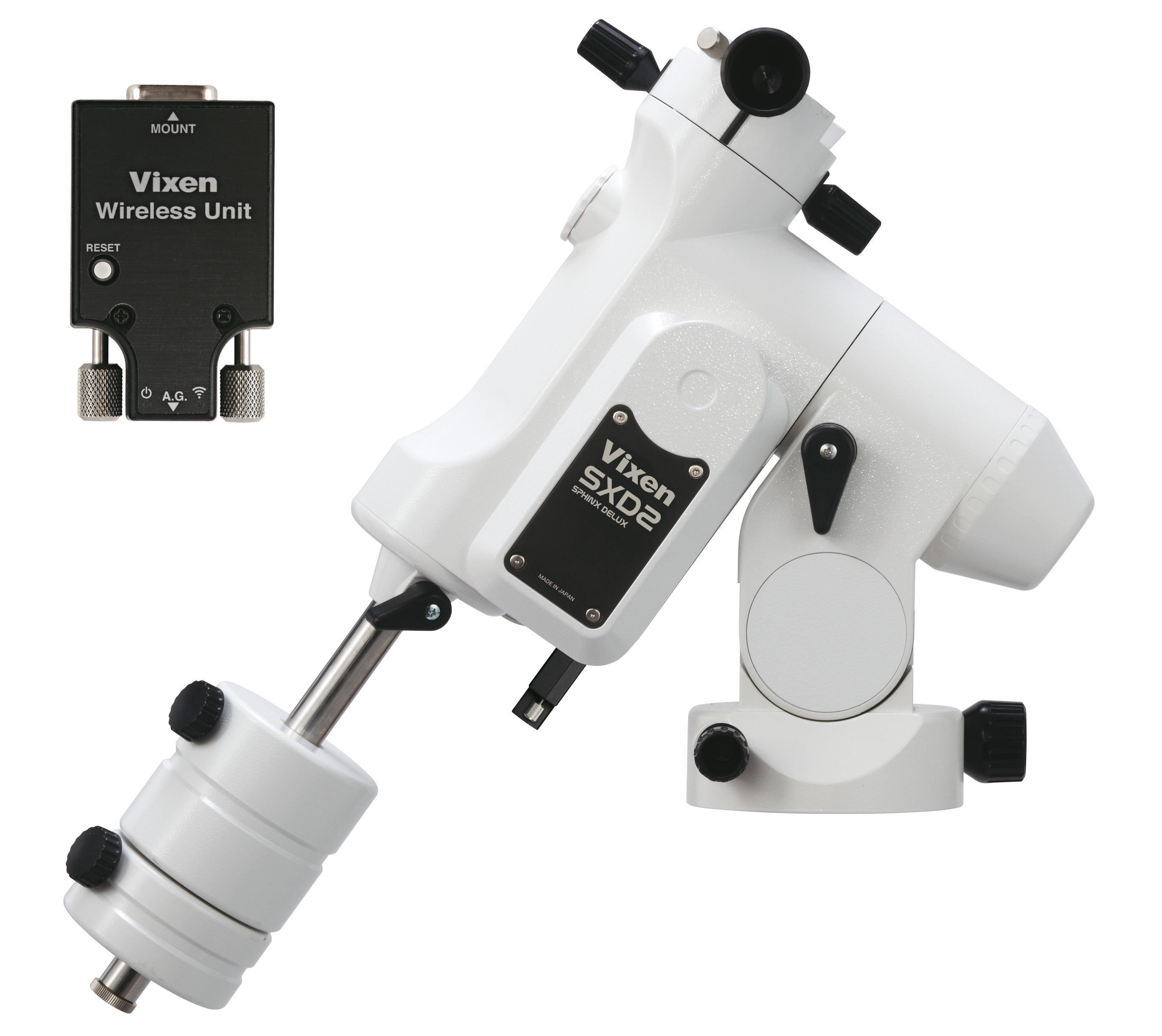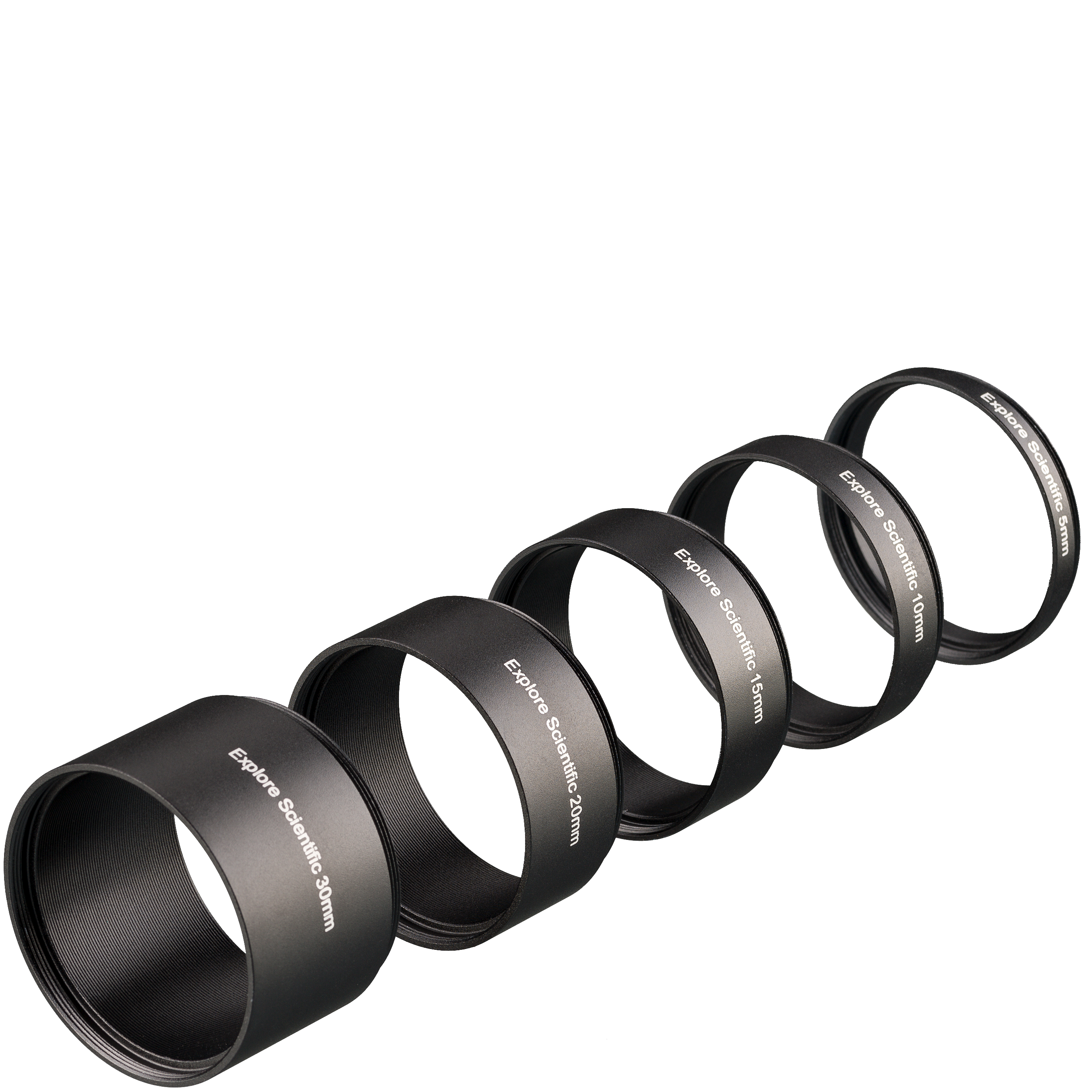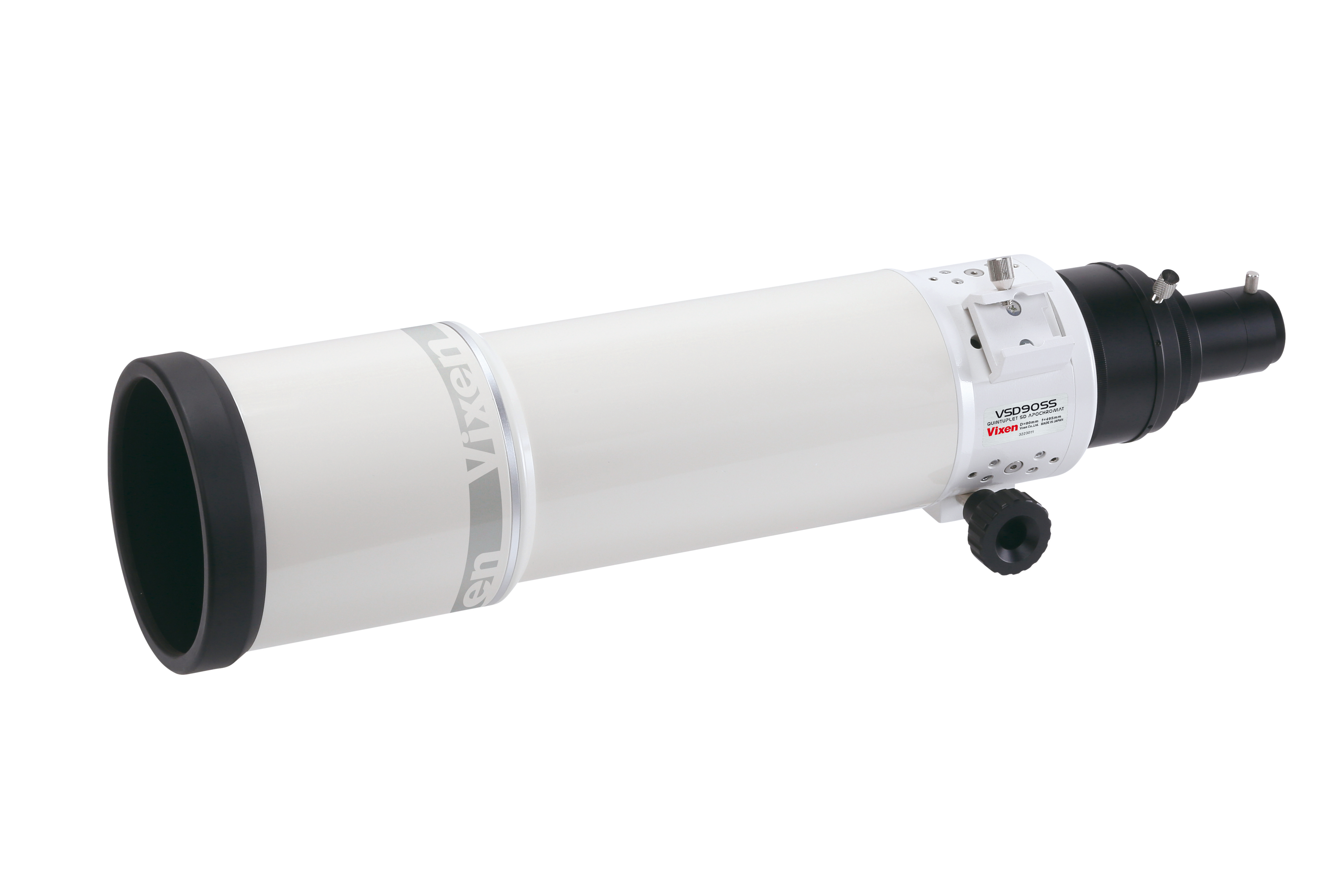



































Product Highlights
Very fast 90 mm high performance astrograph for demanding astrophotographers and observers with 5 lens elements in 5 groups, "Made in Japan"
- Very fast 90 mm high performance astrograph for demanding astrophotographers
- Elaborate construction with 5 lens elements in 5 groups for absolute correction
- Needle-fine stars right up to the edge of the image field, even with a 44x33 mm camera format
- Thanks to the large final lenses, there is almost no vignetting
- Large, stable focuser, also suitable for heavy cameras
- Extremely high sharpness, colour purity and contrast thanks to SD lenses
- Very large field illumination up to 60 mm
- High Strehl intensity of 96.7% at visible wavelengths
- Compatible with optional reducer of the VSD100 for even faster results (F:3.9)
- Optional motor focuser with two speeds can be retrofitted
This revolutionary astrograph is compatible with a full-frame digital DSLR or an even larger 44x33 mm camera. The 90 mm astrograph with fast aperture ratio delivers exceptionally sharp, high-contrast and small point stars from the centre to the corners of the field of view. In addition, it is also ideal for visual observation with a very large field of view but also for planetary observation with high magnification.
The VSD90ss is designed so that there is a "long peak range" in the adjustment accuracy of the sharpness, so that photographers can always achieve satisfactory results in astrophotography. Even if the focus is not quite precise, round and sharp stars are still shown throughout the entire image field.
Illumination without vignetting
In most cases, an astrograph also produces optical vignetting (a gradual decrease in light rays towards the edge of the image) This is mainly caused by rear lenses being shaded by the front lenses. Because of this darkening, it is relatively normal for the photographer to have to further edit the image after taking the picture and also have to do some additional so-called flats before taking the picture. To solve this problem, the VSD90ss uses wide aperture lenses in the rear elements, securing over 90 % of the light volume at the edge of the 60 mm image circle. Since the light intensity is uniform throughout the entire image field of the VSD90ss, there is no need for complex technology to prevent edge darkening. The VSD90ss is coated with the most modern coatings of extremely high reflectivity. These coatings have been specifically developed to optimize the properties of each individual lens element without degrading contrast and light intensity across multiple lenses.
Numerous gradations of light bring beautiful point-like stars into the image field
The low optical vignetting ensures sufficient illumination and thus eliminates the asymmetric flare caused by bright, diffraction-limited stars. It prevents stars at the edge of the 60 mm image circle from exhibiting deformations such as comets, astigmatism or coma. Since the illumination of the image field is relatively similar from the center to the edge of the image, you can expect excellent star imaging.
Please note:
*Depending on the recording system used, mechanical vignetting can still occur due to the camera body or incorrect adapters.
96.7% Strehl for impressive visual observations
The VSD90ss offers a flattened large field of view with a low magnification wide angle eyepiece. Even with a high-quality wide-field eyepiece with a large field of view, you can get sharp images of stars in the entire field of view when visually observing! In the centre of the field of view, a Strehl intensity of an impressive 96.7% is achieved at visible wavelengths. This Strehl ratio exceeds that of the SD81SII apochromat at 95.7%, which is known for its excellent optical properties, and this also works excellently when observing the moon and planets at high magnification.
The versatile large and stable focuser
The VSD90ss has a large focuser with a diameter of 87.5 mm to make optimal use of the large illumination field of 60 mm. With the large extension that is compatible with many accessories, it is perfect for astrophotography up to large format or 35 mm full frame DSLR cameras. Thanks to its precise manufacturing, it is also suitable for very heavy cameras without tipping.
The precision locking lever of the eyepiece extension
The focuser's extension tube has a locking lever that holds the extension tube firmly in position even when using heavy cameras such as large format cameras or CCD cameras with a large sensor. The locking lever clamps the rack gear to the extension barrel so that the viewing angle or focus on your camera does not shift.
Compatible with motor driven focusers
An optional two-speed motor focuser (not included) is available for the VSD90ss to provide sensitive focusing. An EAF (Electronic Automatic Focuser) from ZWO or equivalent can also be retrofitted.
Optional VSD Reducer for even faster results
The tried and tested optional VSD reducer, which was also used on the predecessor, the VSD 100, is also compatible with the VSD90ss. The photographer gets even faster results in astrophotography with an aperture ratio of 1:3.9.
CHARACTERISTICS
- 90 mm aperture, 495 mm focal length (F5.5)
- Needle-fine stars up to the image field edge in 44x33 mm format
- 5 lens elements in 5 groups
- Image illumination up to 60 mm
- Resolution power: 1.29
- Limit size: 11.5
- Light gathering capacity: 165x
- Illumination: 60 mm
- Dimensions: 115 mm diameter x 600 mm length (476 mm length for storage)
- Weight: 4.3 kg
- Connections/Thread: Size thread/84 mm (pitch 1 mm), 60 mm (pitch 1.0 mm), 42 mm for T-ring push fit / 60.2 mm, 50.8 mm and 31.7 mm
- Solar observation: separately available solar projection approach B
- Optional VSD100 reducer compatible (opening ratio F: 3.9)
SCOPE OF DELIVERY
VSD90ss high performance astrograph
| Colour: | white |
|---|---|
| Dust protection caps: | Dust protection caps for front lens and eyepiece holder |
| Focus Group [Telescopes]: | Advanced Amateurs, Specialists and Research, Visual enthusiasts |
| Material: | Aluminium |
| Material front lens or corrector plate: | Ohara Japan FPL-53 ED glass |
| Optical design: | Apochomatic Refractor |
| Product Family [Telescopes]: | Refractor telescope |
| Type of tripod thread: | 60 mm |
0 of 0 reviews
Login
Accessories
Similar products
Customers also viewed


